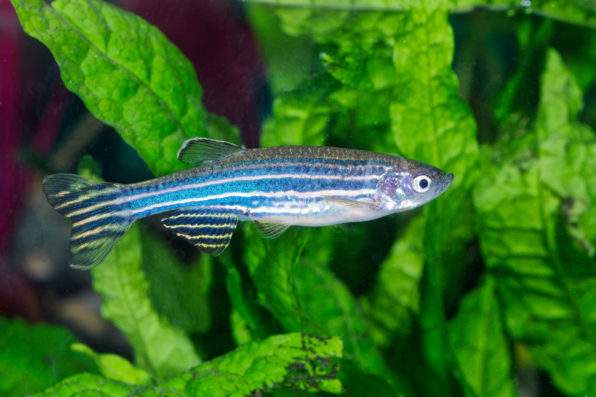Researchers At Memorial Sloan Kettering Cancer Center Used Zebrafish To Study An Inflammation Pathway Linked To Cancer

At Memorial Sloan Kettering Cancer Center (MSK) in New York City, cell biologist Philipp Niethammer studies the fast-acting inflammation mechanisms that work to protect our bodies from infection.
If these mechanisms are overactive, though, they can have an adverse effect and cause damage. Likewise, the mechanisms may play a role in the development and prevention of different cancers.
So, within a project led by Yanan Ma, a postdoctoral researcher, Niethammer’s lab became especially interested in an inflammatory lipid known as 5-oxoETE.
Little is known about this lipid, and it has only been rarely studied due to one major limitation. According to Dr. Ma, a receptor that interacts with the lipid– known as OXER1– is not present in mice and rats.
And since rodents are most significantly used in laboratory research– accounting for 95% of animals– the function of the immune signaling pathway could not be analyzed so easily.
Well, that was until Niethammer’s lab realized that they could take a different approach using zebra fish– a tiny freshwater animal from the minnow family.
Why Focus On 5-oxoETE?
At their lab, the researchers primarily focus on inflammatory mechanisms that work to protect our organs and body cavities, like the lungs and mouth, against infection. At the same time, they study how these mechanisms can get out of control and cause severe damage.
Now, both the positive and negative effects of mucosal membrane inflammation are most often caused by the quick accumulation of a special antimicrobial white blood cell– known as a neutrophil.

NERYX – illustrative purposes only
“We are interested in the molecular mechanisms that guide rapid neutrophils accumulation in tissues and hope ultimately to harness them for therapeutic benefit,” Dr. Ma explained.
So, in his team’s most recent study, the researchers sought to investigate the physiological role of 5-oxoETE– an inflammatory lipid that is poorly understood.
On the surface of the neutrophil, this lipid binds to OXER1– an inflammatory molecule. And this binding ultimately promotes the migration and accumulation of neutrophils.
Previous evidence has also suggested that 5-oxoETE is involved in the inflammation of airways prompted by allergic reactions.
However, Dr. Ma simply wanted to understand the lipid’s physiological functions first– which were elusive.
As for why the researchers turned to zebrafish for their study, evolution is to thank.
“While OXER1 is present in humans and in most larger mammals, like cats and monkeys, it is not evolutionarily conserved in mice or rates– which are the most popular animal models for preclinical research. Fish, however, do not have this receptor, and so they make a great model for study,” Dr. Ma said.
The Zebrafish Study
After the researchers infected the ears of zebrafish with a bacteria known as Pseudomonas aeruginosa, they discovered that production of 5-oxoETE and OXER1 began.
This indicated that both were playing a critical role in enabling the fish to fight off the infection.
Then, the researchers turned to zebrafish larvae and manipulated them to lack one functional version of OXER1. The team found that this change caused the fish to frequently become infected– likely because “neutrophils were unable to rally to the infection sites.”
So, the study definitively identified 5-oxoETE/ OXER1 as a critical immune pathway.
“And since OXER1 gets deactivated in some types of tumors, it may play a role in preventing some cancers– possibly related to OXER1’s role in inflammation and immune surveillance that we demonstrated in this research,” Dr. Ma added.
In addition to paving the way for new therapeutic cancer approaches, though, the researchers’ study also stressed just how important and viable the zebrafish research model is.
Dr. Ma believes that just relying on rats or mice, or really any single species, to study human disease mechanisms is a great disservice.
“As a worst-case scenario, [it can] mislead or delay preclinical research,” he said.
“No single animal model is perfect. They all have strengths and weaknesses. And in biomedical research– just like in the natural world– diversity matters.”
To read the study’s complete findings, which have since been published in Cell Reports, visit the link here.
If true crime defines your free time, this is for you: join Chip Chick’s True Crime Tribe
Sign up for Chip Chick’s newsletter and get stories like this delivered to your inbox.
More About:Science





